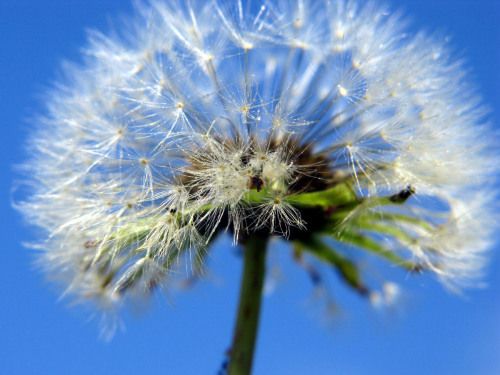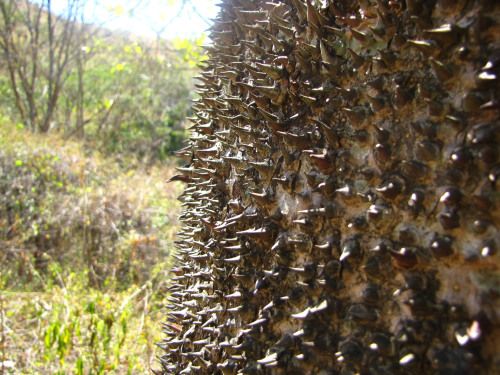
As gardeners, we choose which plants are to be planted in our gardens. Our seeds come from packages purchased from companies or perhaps by small handfuls shared by a neighbor. It’s the civil way to grow things, after all. We’re the gardeners and we choose. That’s what we tell ourselves anyway.
Given half a chance, plants will seed themselves wherever they please when left to their own devices. The truth is that plants are shameless users and will take advantage everything and everyone around them to get a free ride.
Born Drifters
Wind is a favorite seed-dispersing technique for some plant species. This mode of transportation happily carries the lighter types such as dandelion fluff, winged maples, and sand-sized seeds to greener pastures.
Savory Seduction
Then there’s the old, “I-have-a-very-tasty-coating” routine. Birds and mammals alike fall for this excellent strategy as that seeds that come coated in cherry or raspberry juiciness are completely irresistible. This technique never fails and is successful in two ways. Some critters will show zero self-restraint and eat the tasty seed on the spot. Of course, the seed isn’t digested and passed through the animal onto the ground (this doesn’t paint the prettiest picture, but someone has to be honest with the kids). And a plant is born.
Other animals such as squirrels and some birds prefer to bury their prizes to save for — literally — a rainy day. Often they have hidden their loot too well and never recover the goods. And a plant (or tree) is born.
Take Me to the River…
Plants and trees (think: coconuts) growing near lakes, rivers, and other waterways take advantage of the water and simply float away from their parent. Eventually, they hit land miles away and start their own family.
Stuck on You
Mistletoe is shameless with its hitchhiking tactics. Its parasitic seeds are covered with a slime that sticks like hot bubble gum to your shoe. It will often adhere to a bird’s beak or perhaps its feathers. Obviously this is annoying as heck to the bird and the bird rubs against a tree to wipe it off. Of course, the juvenile mistletoe seeds are now stuck to the bark where they can absorb the tree’s nutrients and grow into strong, grown-up mistletoe. Clever, clever seeds.
Happy Hookers
Another favorite seed trick is to be covered with little hooks. Usually, these are seeds won’t grow into anything desirable like say, an orchid. Nah, for the most part they’re just troublesome weeds. Anyway, these hooks practically throw themselves onto the path of oncoming mammals (and shoe laces). Some slide easily off of their current ride, but I guarantee this won’t be true for the ones on your shoe laces.
Spiny seeds can travel for weeks clinging to whatever they can until they’re in a land, far, far away. At some point they will drop off onto your garden bed, home carpeting, or your favorite summer maxi skirt. This is just about the moment where my fascination with seeds’ survival skills ends.
I Am Enough
There are also plants that are self-reliant when it comes to re-seeding themselves. Once fully mature the seed pods simply burst open, sending seeds flying everywhere willy-nilly.
Peas perform this entertaining explosion as does okra, violets, Firecracker flower (Crossandra spp.), Touch-Me-Not (Impatiens capensis) and noxious weed the European gourse (Ulex europaeus). The spike-covered Sandbox tree (Hura Crepitans) shoots its seeds out at an impressive 150 mph ending up 100 feet away in all directions.
Then there are the quieter plants that let their mature seeds fall undramatically to the ground where they germinate much closer to home. Unimpressive and a little boring? Certainly. Yet just as effective as the more spectacular methods of their counterparts.
Plant reproduction may be science, but seeds have hitchhiking down to an art.



















Comments
Log in or create an account to post a comment.
Sign up Log in